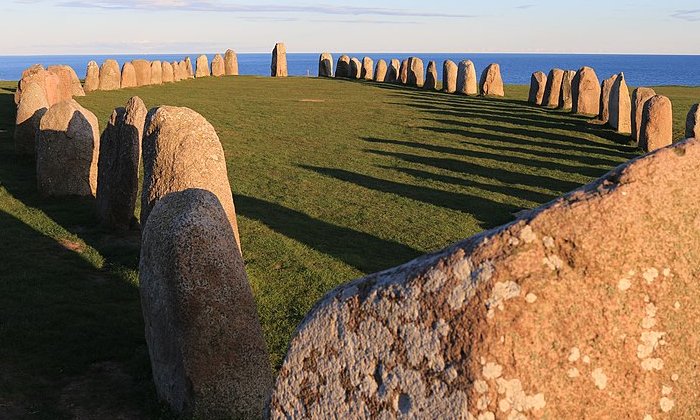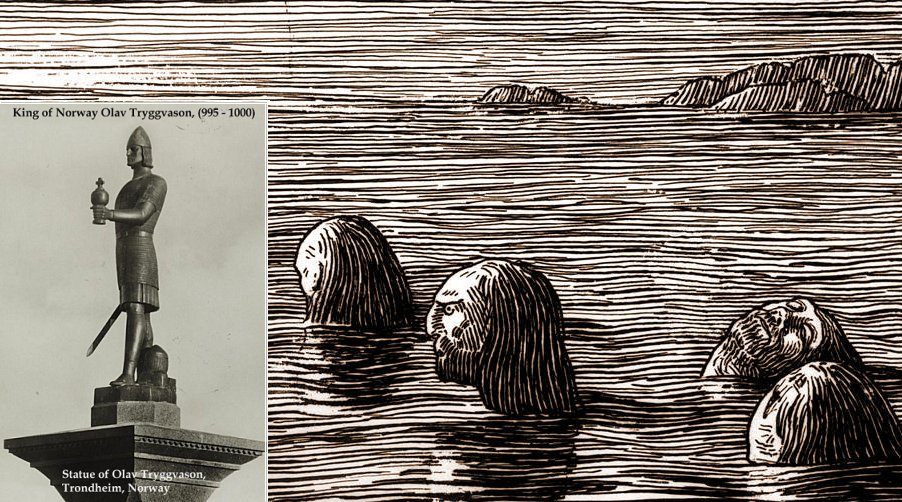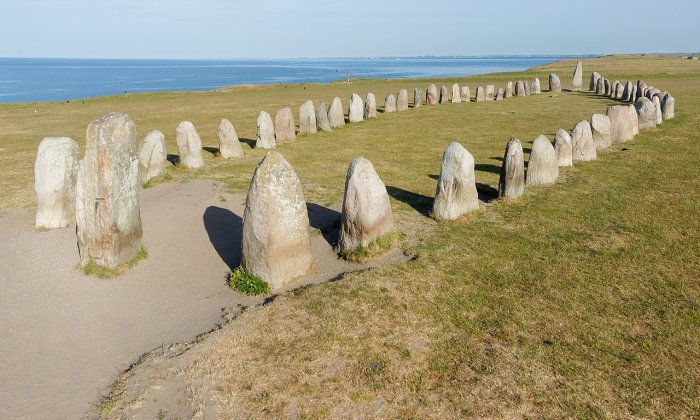Enigmatic Ale’s Stones – Sweden’s Megalithic Ship-Like Formation
A. Sutherland - AncientPages.com - Enigmatic Ales Stenar (in English, Ale's Stones) are located high on the ridge above the old-fashioned fishing village of Kåseberga near Ystad, Sweden.
Ales stones, Hesten and others (Valleberga 20:1). Image credit: Jorchr - CC BY-SA 4.0
Myths, legends, and mystery surround this fascinating megalithic formation consisting of 58 (59) upright boulders and one vertical (weighing up to 1.8 tons each) - placed in a gigantic ship formation, 67 meters in length and 19 meters wide.
The largest stones are almost 3.5-meter and are called "bow" and "stern." They are directed towards the sunrise at the time of the summer solstice, and the sunset at the time of the winter solstice.
The Ales Stenar - Sweden's largest stone complex dates back to the Bronze or Iron Age. From a bird's eye view, it resembles the shape of a boat. It is not known who and for what purpose built it. Not even experts know why this complex was built.
The monument was restored in 1919 when the monoliths were returned to their original position and again in 1956. Whether the stones were a gathering place for sun cult worshippers or used to determine the winter and summer solstices is a mystery that remains unsolved.
The first detailed drawing was made in 1777 by antique C.G.G Hilfeling, a cartoonist, who depicted many ancient monuments in Scania. The first known photograph of Ales stones was years from 1914. source
According to some, the name Als (or Ale) means a "sanctuary" in the ancient Nordic language, and according to others, it means a "ridge," which would correspond well to the topographic location of Ales Stenar, on a 37-meter-high ridge of the Baltic shore.
The Ales Stones - is an impressive monument of the Sun Cult that represents highly advanced knowledge of astronomy possessed by the Bronze Age people.
There are many theories regarding the stones' prehistoric function, and their dating is still debated. Archeologists usually interpret Stone ships as cult centers or burial monuments. The structure can be a tomb from the 6th–7th centuries AD, constructed by the Vikings' ancestors. Archaeologists from Lund University believe that someone significant was buried in it, probably a prominent leader.
However, no human remains were found there. Another explanation could be that they functioned as a sun calendar. According to Swedish researcher and amateur explorer, Bob Lind, this stone construction is "an ancient astronomical observatory, and the boulders forming the complex are a great Sundial."
Are Ale's Stones formation a monument to a Viking chieftain, Olav Tryggvasson, who was buried on this ridge together with his ship? (background painting via Nordvegen Historiesenter)
The stones' position reflects the sun's activity during the summer solstice set at the monument's northwest point and rises at the opposite end during the winter solstice. In 1989, the remains of charcoal were unearthed near one of the stones.
The 14C method showed that they date back to 650 AD. Later, several more tests followed and these showed different results.
Based on these results tghe age of Ale's Stones varies from 330 to 980 AD.Many scientists believe that in the area where this ancient structure is now located, there was already an unknown stone formation. In 1995, it was discovered an ancient urn with leftover food and a hearth.
Whatever the intention initially might have been, one must assume that the monument's significance connected to something very central and significant in the people's lives at the time.
Olaf I Tryggvason met his death in the Battle of Svolder (c. 1000). He jumped overboard, his heavy equipment quickly took him to the depths of the Baltic Sea. Credit: Painting by DF (unknown artist) - Nordvegen Historiesenter
The carbon-14 dating system for organic remains has provided seven results at the site. One indicates that the stone material is around 5,500 years old, whereas the remaining six give a date of about 1,400 years ago. It is in line with information about other monumental stone ships, especially in the area that is now Denmark.
Did Ale's Stones stand alone, or had other monuments existed on the same site? What was the exact number of boulders transported to the site? Were there 59 boulders from the beginning at the ancient site of Kåseberga?
There are legends related to the mysterious Ale's Stones. One says that "Ale" was once considered to be the name of a Viking chieftain that lived between 700 and 1000 CE. There are, however, no known historical records that could support such a Viking name.
Ale stenar (stones) facing west. Image credit: Wikimalte - CC BY-SA 4.0
Another legend has it that about the year 1000, a Viking chieftain, Olav Tryggvasson, was buried on this ridge together with his ship. Oskar Montelius (1843-1921), the famous scholar in Swedish prehistoric "heathen" times, when discussing in 1917 the shape of the Ale "ship," suggested that it was a collective monument for the Vikings who had perished in their voyages and were conquered.
Archaeologists and geophysicists examined the site in 2006 using a geo-radar and magnetometer. Thus they could contour what is still hidden under the ground's surface in different layers.
The examinations showed that Ale's Stones is much larger and has a much more complex structure than the one visible above ground today. Underground, there are other structures, a smaller ship formation, and one or more round stone circles.
Written by A. Sutherland - AncientPages.com Staff Writer
Copyright © AncientPages.com All rights reserved. This material may not be published, broadcast, rewritten or redistributed in whole or part without the express written permission of AncientPages.com
Expand for referencesReferences:
CulturalNarrative – Ystad/Österlen
More From Ancient Pages
-
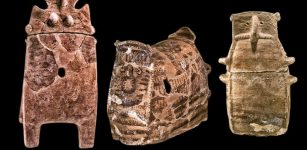 Blue Eyed People In Northern Israel 6,500 Years Ago: New DNA Results
Archaeology | Aug 22, 2018
Blue Eyed People In Northern Israel 6,500 Years Ago: New DNA Results
Archaeology | Aug 22, 2018 -
 Griffins Were Mythical Gold-Guarding Hybrid Creatures Known For At Least 5,000 Years
Ancient Symbols | Mar 9, 2021
Griffins Were Mythical Gold-Guarding Hybrid Creatures Known For At Least 5,000 Years
Ancient Symbols | Mar 9, 2021 -
 On This Day In History: “Man In The Iron Mask” Died In The Bastille, Paris, France – On Nov 19, 1703
News | Nov 19, 2016
On This Day In History: “Man In The Iron Mask” Died In The Bastille, Paris, France – On Nov 19, 1703
News | Nov 19, 2016 -
 Remarkable Ancient Windcatchers: Air Conditioning Systems Built Since Antiquity
Ancient Technology | Sep 3, 2016
Remarkable Ancient Windcatchers: Air Conditioning Systems Built Since Antiquity
Ancient Technology | Sep 3, 2016 -
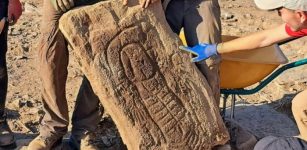 3,000-Year-Old Stela Challenges Assumptions Of Gender And Social Roles In Prehistoric Times
Archaeology | Nov 16, 2023
3,000-Year-Old Stela Challenges Assumptions Of Gender And Social Roles In Prehistoric Times
Archaeology | Nov 16, 2023 -
 Antediluvian Sacred Tablets And Rare Manuscript Reveal Secret Ancient Egyptian Knowledge
Featured Stories | Apr 13, 2018
Antediluvian Sacred Tablets And Rare Manuscript Reveal Secret Ancient Egyptian Knowledge
Featured Stories | Apr 13, 2018 -
 5,000-Year-Old Russian Skull Offers Evidence Of Brain Surgery Made With Stone Scalpel
Archaeology | Oct 23, 2020
5,000-Year-Old Russian Skull Offers Evidence Of Brain Surgery Made With Stone Scalpel
Archaeology | Oct 23, 2020 -
 Judas: A Famous Traitor Or A Hero?
Biblical Mysteries | Oct 16, 2017
Judas: A Famous Traitor Or A Hero?
Biblical Mysteries | Oct 16, 2017 -
 ‘Something’ Ancient And Strange Was Found Hidden Inside A Huge Underground Structure – What Happened Next Is A Mystery
Featured Stories | Nov 8, 2023
‘Something’ Ancient And Strange Was Found Hidden Inside A Huge Underground Structure – What Happened Next Is A Mystery
Featured Stories | Nov 8, 2023 -
 Archaeologist Ludovic Slimak Wants To Rewrite The History Of Early Humans In Europe
Evolution | Jun 10, 2023
Archaeologist Ludovic Slimak Wants To Rewrite The History Of Early Humans In Europe
Evolution | Jun 10, 2023 -
 Story Behind The Two Keys On Vatican’s Flag
Ancient History Facts | Feb 28, 2018
Story Behind The Two Keys On Vatican’s Flag
Ancient History Facts | Feb 28, 2018 -
 Graeco-Roman Era Rock-Cut Tomb Unearthed In Aswan West Bank, Upper Egypt
Archaeology | Apr 24, 2019
Graeco-Roman Era Rock-Cut Tomb Unearthed In Aswan West Bank, Upper Egypt
Archaeology | Apr 24, 2019 -
 Why Did Every Viking Own A Whetstone And Trade Massive Amounts Of Them?
Vikings | Oct 7, 2023
Why Did Every Viking Own A Whetstone And Trade Massive Amounts Of Them?
Vikings | Oct 7, 2023 -
 Our Lives Have Always Been Manipulated By Money – Part 2
Featured Stories | Jun 4, 2022
Our Lives Have Always Been Manipulated By Money – Part 2
Featured Stories | Jun 4, 2022 -
 Norse Goddess Sif Who Lost Her Golden Hair Due To Loki’s Evil Deed
Featured Stories | Jun 30, 2018
Norse Goddess Sif Who Lost Her Golden Hair Due To Loki’s Evil Deed
Featured Stories | Jun 30, 2018 -
 12,000 Years Ago Siberian People Possessed Technique To Soften Ivory And Create Toys Or Art Items
Ancient Technology | Jan 6, 2021
12,000 Years Ago Siberian People Possessed Technique To Soften Ivory And Create Toys Or Art Items
Ancient Technology | Jan 6, 2021 -
 Is The World’s Oldest Zero Hidden In The Bakhshali Manuscript?
Archaeology | Oct 28, 2017
Is The World’s Oldest Zero Hidden In The Bakhshali Manuscript?
Archaeology | Oct 28, 2017 -
 Did Captain Robert Jenkins’ Ear Start A War That Lasted 9 Years?
Ancient History Facts | Jun 24, 2017
Did Captain Robert Jenkins’ Ear Start A War That Lasted 9 Years?
Ancient History Facts | Jun 24, 2017 -
 Parthians: Their Great Empire And Skilled Horse Archers
Civilizations | Nov 10, 2016
Parthians: Their Great Empire And Skilled Horse Archers
Civilizations | Nov 10, 2016 -
 The Enigma Of People And Gods With Horns In Ancient Times
Featured Stories | Nov 7, 2015
The Enigma Of People And Gods With Horns In Ancient Times
Featured Stories | Nov 7, 2015

